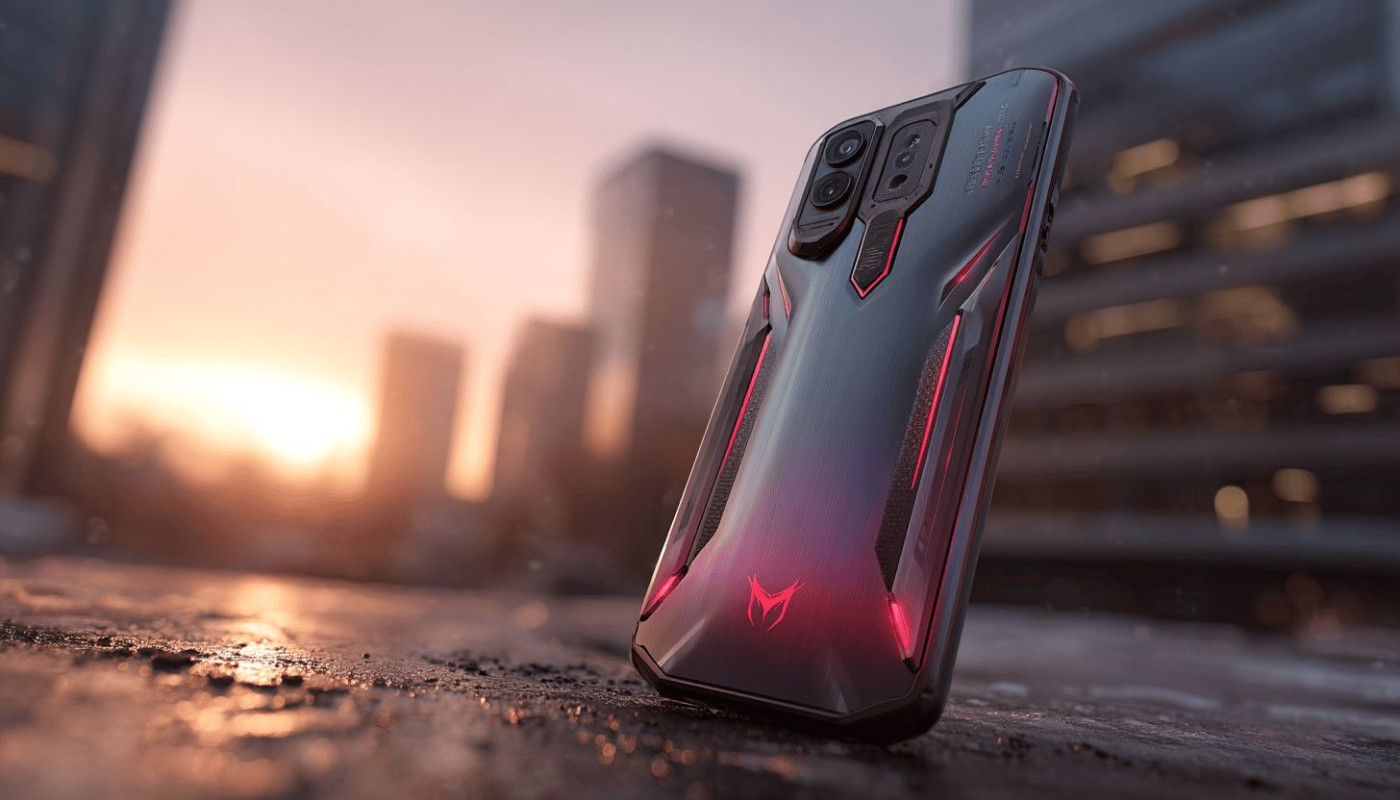Table of contents
The realm of video games has witnessed a significant transformation with the advent of mobile gaming phones, shaking the foundations of traditional handheld gaming devices. This shift has not only impacted the way games are developed and played but also sparked a debate on the future of portable gaming. Dive into the intricate dynamics between these two platforms and uncover the implications of this technological evolution which is redefining the landscape of on-the-go entertainment.
The Evolution of Portable Gaming
The landscape of portable gaming has undergone a remarkable transformation over the past decades. Initially, the gaming industry was dominated by dedicated handheld consoles, designed specifically for gaming on the go. Pioneers like the Game Boy and the PlayStation Portable offered gamers the opportunity to enjoy their favorite titles without being tethered to a television. As technology advanced, so did the capabilities of these devices, culminating in powerful systems such as the Nintendo 3DS, which brought immersive 3D gaming to the palms of players' hands.
In parallel with the development of handheld consoles, the smartphone burst onto the scene, forever altering the portable gaming evolution. Early mobile phones were not optimized for gaming, but rapid advancements in smartphone hardware have revolutionized their potential. With the advent of multi-core processors, high-resolution displays, and substantial RAM capacities, modern smartphones now rival traditional consoles in terms of performance. The smartphone gaming market has thus seen exponential growth, as users appreciate the convenience of having a multi-purpose device that can handle communication, entertainment, and gaming all in one package.
This convenience factor, coupled with the vast ecosystem of games available through app stores, has significantly contributed to the mobile gaming trends that favor smartphone gaming. As a result, the dedicated handheld decline has become more apparent, with major manufacturers either leaving the market or repositioning their products to coexist with mobile gaming phones. Remarkably, these smartphones have not only democratized gaming but have also become a gateway to futuristic technologies like augmented reality (AR). Titles such as Pokémon GO have shown that AR can enrich the gaming experience, a feature made widely accessible and popular through smartphone integration.
An expert in gaming technology with a comprehensive grasp of the industry's history would attest to the dramatic shift in consumer preferences and the impact on traditional gaming models. The shift towards mobile gaming is not merely a trend; it is a reflection of the evolving demands of gamers who seek versatility, accessibility, and cutting-edge technology from their gaming experiences.
Performance and Gaming Experience
When delving into the gaming performance comparison between mobile gaming phones and traditional handhelds, one cannot overlook the stark advancements in processing power that modern smartphones boast. The high-octane processors in gaming phones often surpass those found in conventional handhelds, offering smoother gameplay and faster load times. This processing prowess directly contributes to a seamless gaming experience, allowing for complex graphics to be rendered with ease. Display technology also plays a pivotal role; mobile gaming phones frequently flaunt higher resolution screens with superior color reproduction, elevating visual clarity and immersiveness. A particular aspect of display technology that is pertinent to the gaming experience is frame rate. With gaming phones often supporting higher frame rates, the result is a more fluid and responsive visual feedback, which is paramount for fast-paced gaming genres.
Battery lifespan is another vital factor that distinguishes these devices. Gaming phones are engineered with robust battery life capable of supporting extended play sessions without frequent recharging. In contrast, traditional handhelds may struggle to keep pace with the battery efficiency and longevity of their mobile counterparts. This aspect is especially significant for gamers who demand longevity and portability from their devices. In essence, the amalgamation of cutting-edge processing power, state-of-the-art display technology, and enduring battery life in mobile gaming phones not only challenges but often exceeds the capabilities of traditional handheld consoles, reshaping the gaming experience quality to meet the expectations of today's gamers.
Game Development and Ecosystems
The ascent of mobile gaming has markedly reshaped the landscape of game development dynamics and mobile ecosystems. Traditional handheld consoles were once the bastions of portable gaming, offering a tailored and consistent experience for game developers to exploit. In contrast, the mobile platform, with its vast user base and diverse hardware, presents a new frontier for developers. The economic models now heavily favor digital distribution, a departure from the physical cartridges and discs of yesteryear. Furthermore, the mobile marketplace has given rise to in-app purchases and freemium models, allowing developers to monetize their games post-download, often leading to higher revenue potential than the one-time purchase of traditional handheld games.
Distribution channels for mobile games are significantly streamlined; developers can publish their games directly to app stores with global reach, bypassing the logistical and financial hurdles of physical distribution. This accessibility has led to an explosion of content, with the caveat of increased competition in the marketplace. Another noteworthy trend is cross-platform compatibility, where games are developed to function seamlessly across mobile devices and traditional consoles, expanding the potential audience and fostering an integrated gaming experience. This shift reflects not only a technological convergence but also an acknowledgment of the growing influence of mobile gaming on the broader gaming ecosystem.
Market Trends and Consumer Behavior
Recent market trends analysis indicates a significant shift in consumer gaming preferences, pivoting towards the convenience offered by mobile gaming phones. An examination of demographic gaming data reveals that the profile of gamers is becoming increasingly diverse, spanning various ages and socio-economic backgrounds. This expansion is partly fueled by the ubiquity of smartphones, which have significantly lowered the barrier to entry for gaming, allowing more people to participate. As a result, mobile gaming adoption has soared, challenging the domain traditionally occupied by handheld consoles.
Platform game popularity, once dominated by dedicated handheld devices, is now experiencing a renaissance on mobile platforms. The games that are popular on each platform vary, with mobile gaming phones offering a wide range of titles from casual puzzles to sophisticated strategy games that were once the preserve of PCs and consoles. The ease of access to these games, often through digital marketplaces, influences consumer decisions, tilting the scale in favor of the convenience that mobile gaming affords.
The role of analytics has become paramount in understanding these dynamics. Market analysts specializing in the gaming industry utilize robust analytics to dissect and interpret how consumer gaming behavior evolves. The insights gathered from such data are invaluable for stakeholders who seek to adapt to the changing landscape and cater to the nuanced needs of modern gamers. It is clear that the rise of mobile gaming phones is not just reshaping consumer behavior but also redefining the gaming industry at large.
The Future of Handheld Gaming
As the landscape of gaming continues to evolve, the handheld gaming future remains a topic of spirited discussion, particularly in the face of stiff mobile competition. While mobile gaming phones have surged in popularity, offering convenience and multipurpose functionality, the path for dedicated handheld devices is less certain. Innovations in handheld gaming systems are imperative to maintain their handheld device relevance in an industry increasingly dominated by smartphones.
One potential avenue for keeping handhelds pertinent is the integration of gaming innovation, such as augmented reality (AR) and virtual reality (VR), offering a unique, immersive experience that mobile phones cannot easily replicate. There's also the possibility of seamless cloud gaming integration, enhanced haptic feedback, and foldable screens to offer a more versatile and engaging gaming experience.
Alternatively, handheld gaming devices may find their stronghold within niche gaming markets. They could cater to enthusiasts seeking a more tactile and focused gaming experience, or to those who have a penchant for retro gaming and the nostalgia associated with it. In this scenario, handhelds could become exclusive platforms for indie game developers or for games that require dedicated controls.
Ultimately, the trajectory of handheld gaming will greatly depend on the industry's capacity to adapt and innovate in the face of mobile device integration. As the boundaries between different gaming platforms continue to blur, handheld devices must carve out a unique value proposition to thrive alongside their multifunctional counterparts.
Similar

Exploring Puzzle Games: Benefits For Cognitive Skills

Leveraging AI cameras for professional photography on smartphones

